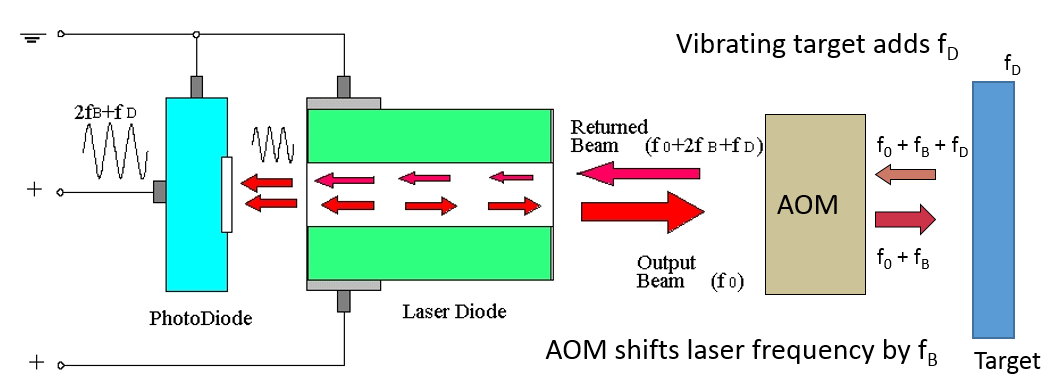OMS Laser Doppler Vibrometers
Laser vibrometers operate by dividing a laser beam into two parts, an object beam and a reference beam, directing the object beam to a vibrating target, and then combining these two beams on a photo-detector. The Laser Doppler Vibrometers developed by OMS Corporation are based on the principles of heterodyne self-mixing in a laser diode. As shown in the figure below, the object beam emerges from the laser diode, passes through an Acousto-Optic Modulator (AOM), and then is directed to the target. Scattered light from the target passes back through the AOM, and then back into the laser diode, where it mixes with the reference beam on a photo-detector at the back of the diode.
The AOM adds a known frequency shift Fb to the initial laser frequency Fo, and then the motion of the target adds a Doppler shift FD, where this shift is directly proportional to the target velocity. When the scattered light passes back through the AOM, it acquires a second frequency shift of FB. Thus, the photo-detector sees a mixture of the reference beam with frequency F0 and the object beam with frequency F0 + 2FB + FD. The interference of these two beams produces a beat frequency signal with a frequency of 2FB + FD. This signal is a traditional frequency modulated (FM) signal, and can be demodulated by standard analog or digital methods. After demodulation, the output is the Doppler shift, FD, as a function of time, which is proportional to the target velocity as a function of time.

The main advantage of the laser-diode self-mxing architecture is that this laser vibrometer has very few optical components, making it easy to align and to keep aligned. This makes the compact, rugged architecture of the LaserPoint LP01 Laser Vibrometer an excellent choice for harsh environments.
